The Rise and Importance of Video Marketing in Your Multifamily Marketing
Reflect on the most engaging content you’ve encountered on social media lately. Which pieces left a lasting impression, prompting you to share or tag a friend?
The undeniable force behind these memorable moments is video content. Whether it’s an amusing pet mishap, an informative tutorial, or an innovative DIY project, videos have an unrivaled power to captivate.
U.S. adults, on average, dedicate six hours daily to watching videos, and this watch time has skyrocketed by over 270% in the past year. Research indicates that more than half (54%) of consumers want to view more video content from their favored brands or businesses. Remarkably, 86% of companies now leverage video for marketing, a significant jump from 63% a few years ago.
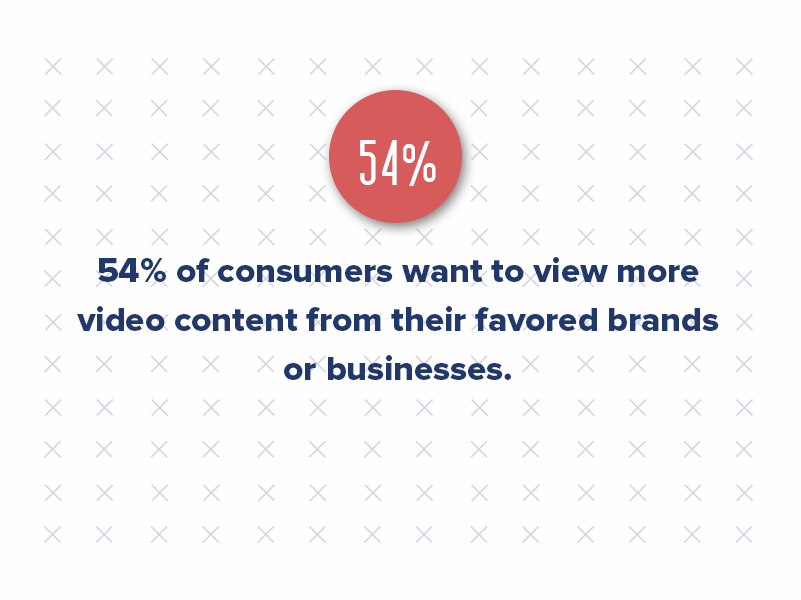
These striking statistics underscore the substantial potential of video content marketing, especially in the multifamily marketing landscape. Now is the perfect moment if you haven’t yet integrated a robust video marketing strategy.
Why Is Video Content Marketing Important?
Search engines love fresh and engaging content, and nothing fits the bill quite like creating videos. In today’s digital age, landing pages, blog posts, and other online spaces are instantly elevated when you include video. The type of video matters, too. For instance, an “explainer video” can help break down complex concepts, while a product video shines a spotlight on the unique features of your products and services.
With many video and social media platforms available, there’s never been a better time to experiment with video ads, live videos, and other video formats.

In our fast-paced digital world, consumers search for content that offers instant gratification. Videos perfectly meet this demand, enabling brands to encapsulate their core message in a short yet impactful format. When you add video to your marketing mix, it’s not just about visuals; it’s about building genuine relationships with your audience.
The art of promoting your video has also become more accessible and budget-friendly, thanks to evolving technology. Now, multifamily marketers can benefit from precise targeting on video platforms and receive in-depth analytics, making it an indispensable marketing tool. Plus, with the option to share videos widely, you increase the chances for potential customers to watch your video and connect with your brand.
Effective Content for Your Video Marketing Strategy
Understanding and integrating the importance of video within your multifamily marketing framework is crucial, but it’s just the beginning. Determining which video formats and styles align best with your business objectives can be challenging.
To navigate this landscape, here are some video marketing tips to optimize your strategy for the multifamily sector:
1. Live Streaming and Reels
Social videos are short, conversational clips explicitly designed for social media. From live streaming on Facebook to Instagram Stories, brands can cast a wide net around prospective customers and reel them in with captivating content. Given the transient attention span on social media, these videos should ideally be condensed, gripping, and under two minutes.
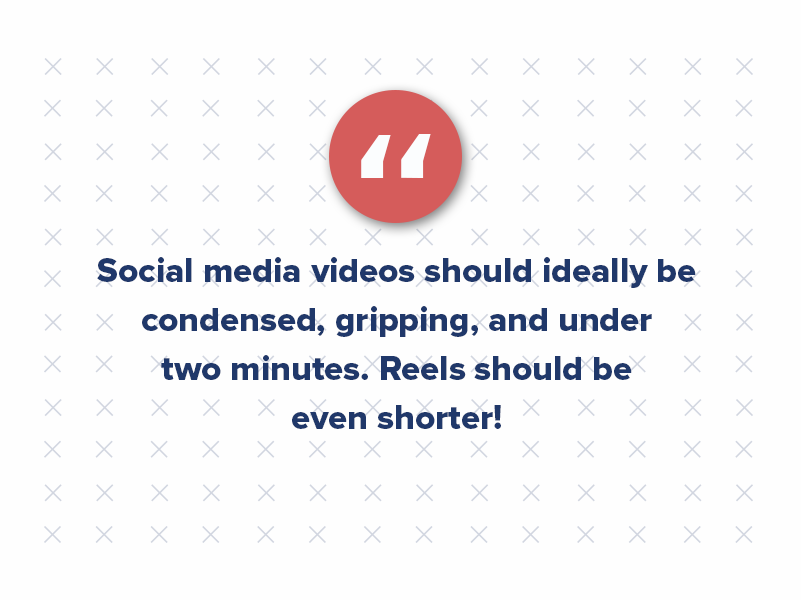
Embrace live videos, as these can be utilized for property tours, resident events, or Q&A sessions. Live interactions build authenticity and foster a deeper connection with potential residents.
2. Brand vs. Product
Brand videos offer a high-level overview of your company’s brand, mission, and style. This content can be clips of your office and showcase company culture, but it should not sell a product. You should consider a brand video as your mission statement.
Product videos, conversely, educate your audience about the benefits of your product or service. With this content, it is essential to highlight and explain customer benefits and not just the features.
Ensure you’ve added video components, landing pages, and promotional materials to your website. This enriches the user experience and positions your brand as current and responsive to digital trends.
3. Testimonials and Customer Spotlights
Customer spotlight or testimonials showcase one of your customers and how they benefited from your product or service. These videos offer a great alternative to your website’s traditional written testimonial.
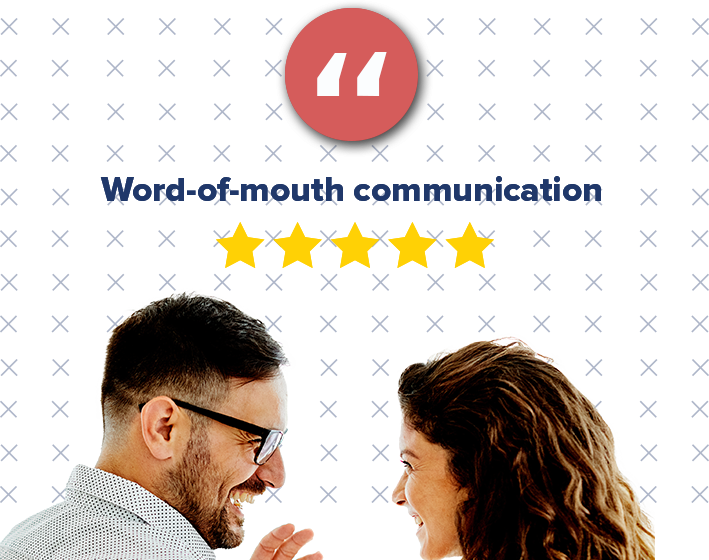
At Criterion.B, we have seen word-of-mouth communication as a powerful force — especially when building brand trust. Trust is built organically by spotlighting real customers and narrating their positive experiences, making this a vital aspect of multifamily marketing. Your prospective customers will trust the opinions of your current customers more than they trust your website content, blog, or advertisements. Video testimonials are an authentic way to capture your customer’s feedback and potentially drive more multifamily leads to your business.
4. Trending Videos
As with all marketing endeavors, staying abreast of the latest video trends and innovations is crucial. Whether it’s new editing techniques, emerging platforms, or innovative content ideas, being in the know ensures your strategy remains competitive.
Trending videos leverage a trending or timely topic at the core, whether it’s a clip related to a holiday, an upcoming election, or just a hot topic within your industry.
For example, we developed a video on the importance of building buyer personas, featured during a panel discussion at NAA Apartmentalize. The clip was timely (for the event), trending (within the multifamily market), and relevant to all of our buyer personas. Watch the full video below!
5. Interactive Content
Interactive videos offer viewers a unique, participatory experience. You turn passive viewers into active participants by embedding quizzes, polls, or clickable links. This heightened engagement ensures better retention and provides invaluable feedback. In multifamily marketing, interactive content can virtually tour potential properties, allowing viewers to choose which areas of a residence they’d like to see or even select finishes and furnishings in real time.
6. SEO Video Marketing
Your video’s content is only as effective as its discoverability. SEO video marketing is vital. Ensure your video titles, descriptions, and tags are optimized with relevant keywords. Moreover, to make your content inclusive, provide subtitles or closed captions. This not only aids viewers with hearing impairments but also caters to those who watch videos without sound, which is a significant portion of viewers, especially on social media platforms.
Integrating these video marketing tips can further elevate your multifamily strategy, ensuring you reach a broader audience while providing engaging and valuable content. Remember, in today’s digital age, it’s not just about producing videos — it’s about creating videos that resonate, inform, and inspire.
5 Ways Video Content Can Drive Multifamily Website Traffic
With “doom scrolling” rising, capturing and maintaining a visitor’s attention on your website can be a significant challenge. However, integrating videos into your web content offers an effective solution. Here’s how:
1. Enhance Your User Engagement
Embedding videos in your blog posts or web pages can dramatically increase user engagement. Instead of skimming through a lengthy article, viewers can watch a video that summarizes or complements the content. This multimedia approach appeals to a broader range of learning styles — while some might prefer reading, others gravitate toward visual or auditory content.
2. Increase the Average Time on Page
One of the crucial metrics search engines use to gauge the quality and relevance of a page is the amount of time a user spends on it. A compelling video can keep visitors on your page for extended periods, signaling to search engines that your content is valuable. This can subsequently improve your site’s search engine ranking, making it easier for potential customers or readers to discover your content.
3. Reduce Bounce Rates
A “bounce” occurs when a visitor lands on a page on your website and leaves without interacting with any other part of your site. A high bounce rate can negatively impact your SEO ranking. Videos, with their innate ability to captivate, can mitigate this. By embedding a video, you’re giving visitors an additional reason to stay and explore, reducing the likelihood of a bounce.
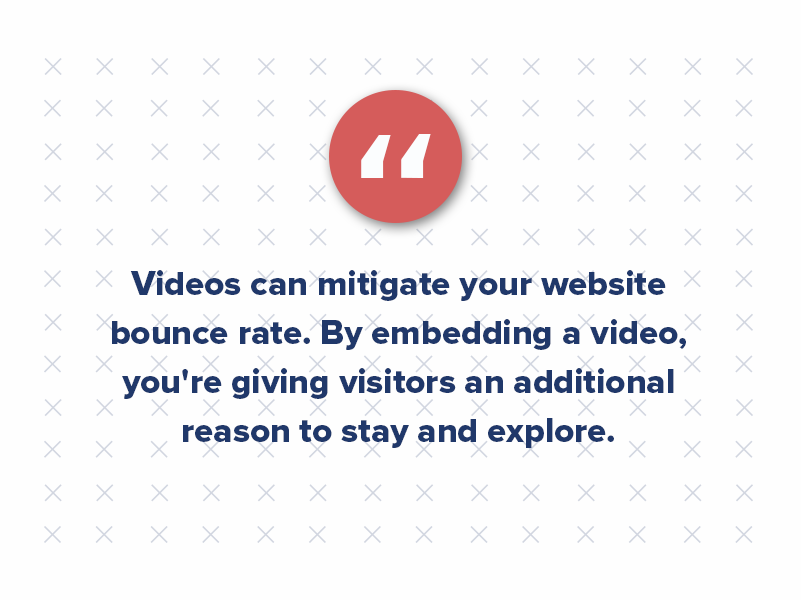
4. Boost the Shareability of Your Site
Video content is inherently shareable. Visitors who find your video insightful, entertaining, or valuable are likelier to share it on social media platforms or with their network. Every share increases the potential for more traffic to your website, creating a virtuous cycle of engagement and discovery.
5. Improve Your Content Diversity
A diverse content strategy appeals to a wider audience. By embedding videos in your blog posts, you’re catering to those who prefer watching over reading. This diversity can make your website a go-to resource for information, ensuring repeat visits and consistent traffic.
Captivate Your Customers With SEO Video Marketing
While social media videography plays a crucial role, broadening your scope to include video across your website, landing pages, and emails is vital. Don’t limit yourself to just one type of video. From explainer videos detailing your amenities to animated infographics showcasing resident testimonials, diversifying your video formats can cater to varied audience preferences and increase engagement.
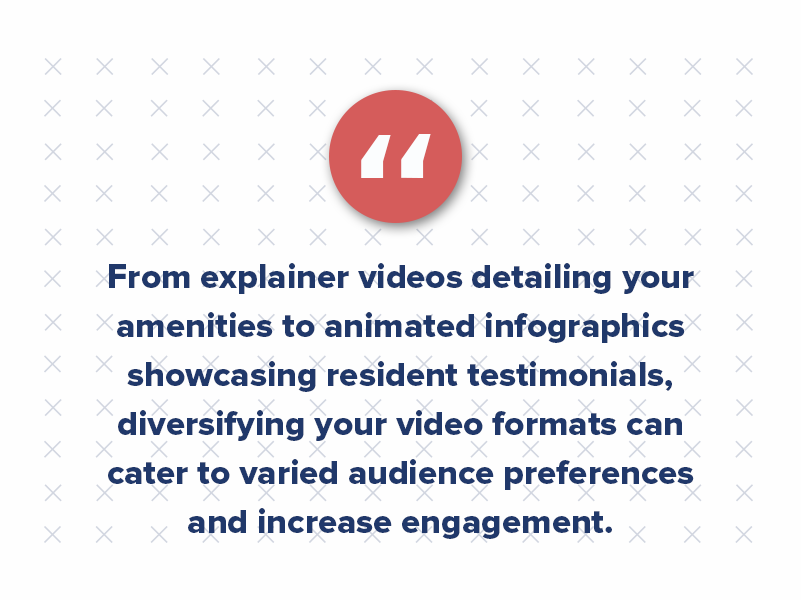
Delving into the benefits of video marketing reveals that it doesn’t just enhance engagement; it boosts SEO rankings, fosters trust, and increases conversion rates. Video marketing tips can help businesses optimize their content for SEO video marketing, ensuring their videos rank higher and reach a broader audience.
While the concept of branded video content’s immense multifamily marketing potential isn’t novel, its soaring popularity among consumers and its heightened significance to marketers certainly is. To stay competitive and resonate with your audience, harnessing this trend is no longer optional but imperative.

Boosting Your Multifamily Digital Marketing: Leveraging Semrush’s Site Health Score for Success
Search engine optimization (SEO) is the cornerstone of any successful multifamily digital marketing campaign. And while numerous strategies and best practices abound, one often overlooked area that can make a significant difference in your multifamily SEO is your website’s health.
One tool that stands out for measuring site health is Semrush’s site health score. Let’s deep dive into what it is, its impact, and how to use it to skyrocket your multifamily SEO traffic.
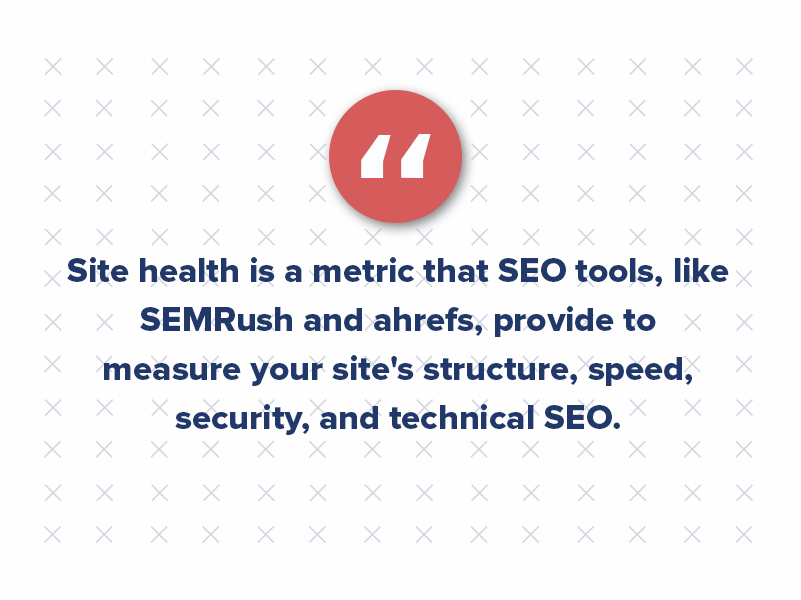
Understanding Site Health Score
The health of a website is determined by various factors, including its speed, responsiveness, and the absence of errors or issues. Semrush’s site health score is an aggregate metric that evaluates your website’s overall performance and user-friendliness, ranking it out of 100. This score is based on the number and severity of on-site issues detected.
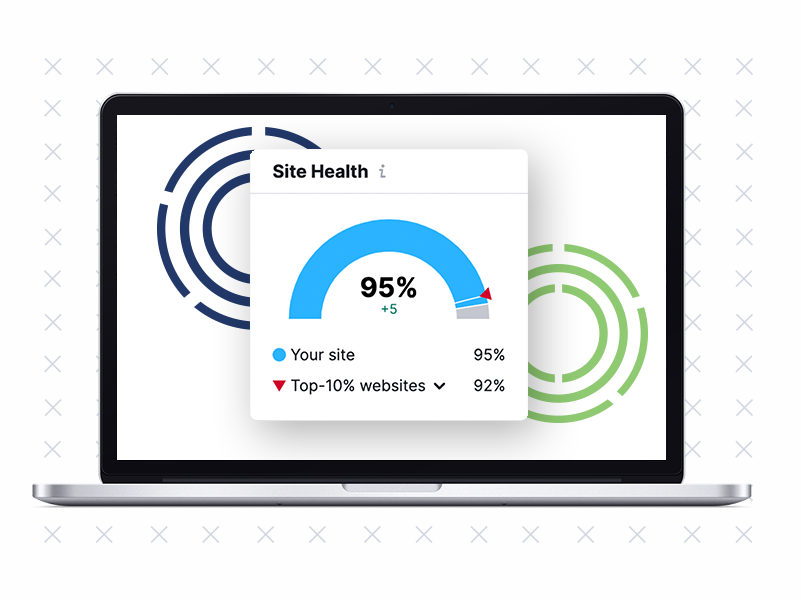
Why Is Site Health Important for SEO?
- User Experience: A healthy multifamily website offers a smoother user experience. Slow-loading pages or broken links can deter users and increase your bounce rate, negatively affecting your SEO ranking.
- Search Engine Crawlers: Google and other search engines prioritize websites that offer a better user experience. If crawlers encounter too many errors on your site, they may index fewer pages.
- Site Speed & Responsiveness: Users and search engines favor a fast-loading and responsive website. Google considers page speed a ranking factor, especially on mobile devices.

How to Track Your Site Health Score With Semrush
- Dashboard Overview: Log in to Semrush and navigate to the ‘Site Audit’ tool. Here, you’ll find an overview of your website’s health score and a list of issues.
- Issue Tracking: Semrush categorizes issues as Errors, Warnings, and Notices based on their severity. Delving into each category helps identify both major and minor issues that need fixing.
- Prioritize & Address: While fixing all issues is ideal, start with the most severe ones. Tackle errors first, then warnings, and finally, notices.
Tools to Complement Semrush’s Site Health Score
While Semrush offers comprehensive insights, it’s always good to cross-reference using other tools. Here are a few:
- Google PageSpeed Insights: Provides information on page speed and gives optimization suggestions.
- GTmetrix: Analyzes site speed performance using various metrics and offers actionable recommendations.
- Moz Pro: Offers site crawl reports to detect and fix SEO issues.
Tips to Boost Your SEO Traffic With Site Health Optimization
- Regularly Audit Your Site: Regularly schedule site audits to detect and address issues promptly.
- Optimize Images: Large images can slow down your site. Use tools like TinyPNG or Compressor.io to compress images without compromising quality.
- Implement Browser Caching: This reduces the load on your server, making your website load faster.
- Minimize Redirects: Each redirect can slow down the page loading process. Try to keep them to a minimum.
- Optimize CSS & JavaScript: Use tools like CSSNano and UglifyJS to minify your code, improving loading times.
The Bottom Line
The significance of a site health score cannot be understated in the realm of multifamily SEO. With tools like Semrush, tracking and optimizing your site’s health has never been easier. Remember, a healthy website isn’t just about appeasing search engines — it’s about providing your visitors with the best experience possible. And in the vast digital landscape, a positive user experience is paramount to success.
Ready to boost your multifamily SEO traffic through a stellar site health score? Contact Criterion.B today to implement these strategies, and watch as your digital presence thrives!
Why Inbound Marketing Trumps Outbound in Property Management
Who does not love referrals? But we live in a new digital world where people do not need to pester their neighbors to find a good recommendation — they have a slew of information at their fingertips via smartphones.
Think about what your top source of new business leads was last year for your property management company. If your answer was “word of mouth,” you are probably in trouble. If you answered “I don’t know,” you are arguably in even more trouble.

The real estate and property management sectors have significantly transformed over the last few years. Traditional marketing methods that once dominated the scene gradually changed modern tactics.
One notable shift has been from outbound to inbound strategies, particularly in the property management marketing realm. But what is causing this shift, and why is inbound marketing proving to be more effective?
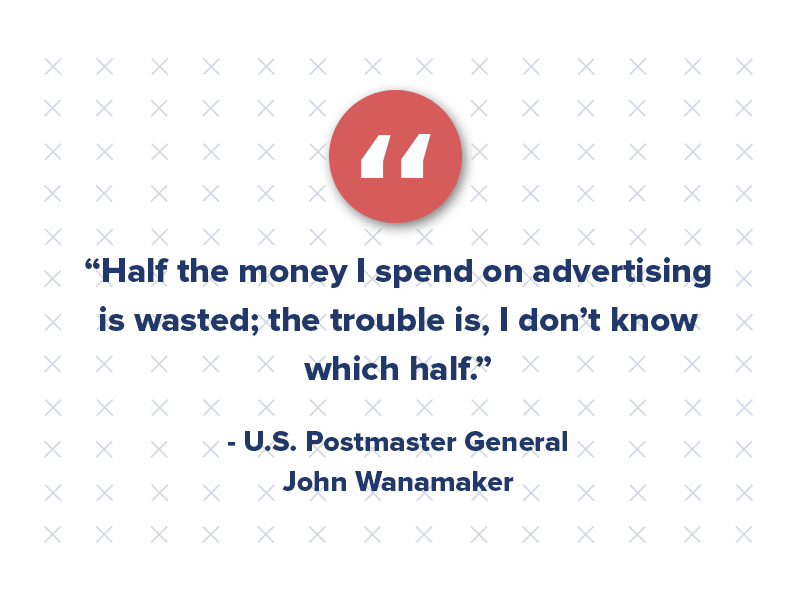
Whoever is working on your property management marketing strategy — whether it is an agency or an in-house multifamily marketing team — should be able to track your investments back to actual multifamily leads and revenue for your business.
Understanding the Outbound vs. Inbound Divide
Before diving into the specifics, it’s important to understand the core differences between outbound and inbound marketing.
There are a lot of definitions floating around about what inbound marketing is, but an easy way to think about it is to think of the leads flowing in versus you scouting them. A good example of inbound marketing is search engine optimization (SEO). A property management company with a website ranking highly in the search engine results for relevant keywords will likely have a good flow of multifamily leads.
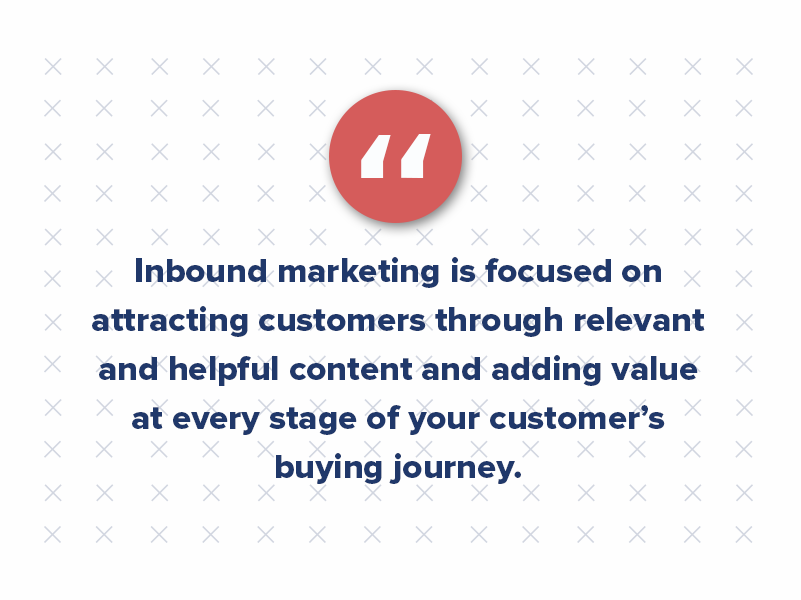
Outbound Marketing: This is the “old school” method of reaching potential customers. It involves pushing a message out, often to a large audience, hoping for a response. Examples include TV commercials, radio ads, print advertisements, and cold calls.
Inbound Marketing: This is a more contemporary approach where businesses create valuable content and experiences tailored to potential clients. It’s about attracting clients to come to you. This method revolves around content creation, search engine optimization, and social media marketing.
1. It’s more cost-effective than traditional outbound marketing.
Budget considerations are paramount for any property management marketing plan to succeed. In many instances, inbound marketing has proven more cost-effective than its outbound counterpart. Creating quality content might require an initial investment, but its long-term organic reach often surpasses that of costly traditional ads.
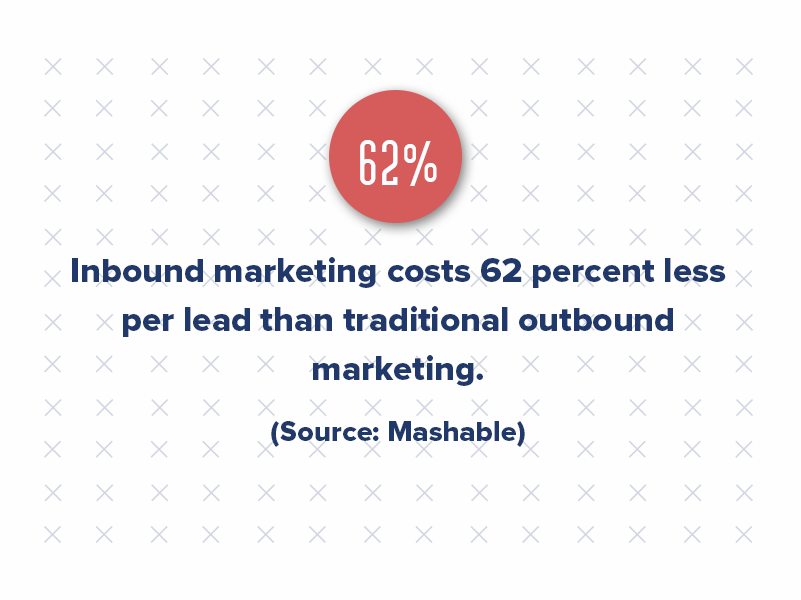
2. It helps build trust and brand loyalty with your target audience.
One of the most compelling reasons inbound marketing is taking the lead in marketing for property management is the trust factor. Inbound marketing relies heavily on content creation, which can position a property management company as an industry expert. Over time, this builds trust and credibility with the audience, something outbound methods might struggle to achieve.
3. It provides better audience targeting and precision.
With inbound marketing, you’re drawing in those already interested in property management or actively seeking your services. Advanced tools and analytics allow businesses to tailor their property management marketing plan to target specific demographics. This level of precision ensures a higher conversion rate.
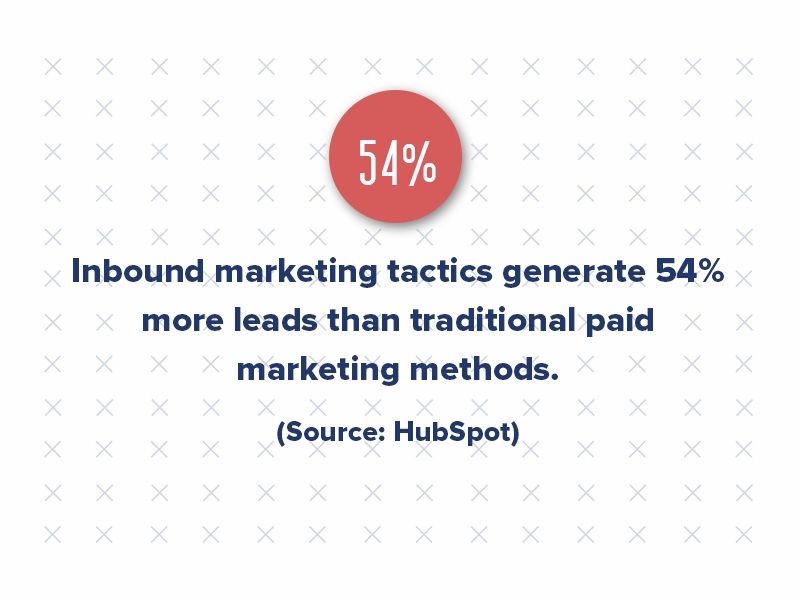
4. It allows for quick adaptations to algorithm changes.
A branding and digital marketing agency can attest to the fast-paced evolution of online trends. Inbound marketing, being inherently digital, allows for quick adaptations. Whether it’s a change in search engine algorithms or the rise of a new social media platform, inbound methods can easily pivot to stay relevant.
5. It promotes engagement and positions you as a thought leader.
Modern consumers prefer engagement over mere advertisements. They’re more inclined to interact with informative blogs, insightful infographics, or engaging videos. An effective property management marketing plan will leverage this preference, creating content that informs and engages.
6. It enhances your credibility and multifamily SEO.
Search engine optimization (SEO) is a cornerstone of inbound marketing. With most consumers beginning their property management search online, ensuring your business ranks high on search engine results is crucial. Inbound marketing directly taps into organic search traffic by focusing on SEO strategies, offering higher visibility and credibility.
4 Inbound Marketing Advertising Channels to Prioritize
In the digital age, the strategies employed in marketing for property management have expanded beyond traditional methods. Today, the landscape is diverse, with multiple channels offering unique ways to capture audience interest.
From the intricate art of email campaigns to the immediacy of PPC ads, each channel brings its distinctive advantage to the table. Below, we explore four pivotal multifamily inbound marketing channels and why they are becoming indispensable components of a robust property management marketing plan.
1. Email Marketing
Are you tracking if you get any multifamily leads from those direct mailers? Printing and mailing are costly and do not necessarily target your prospective customers when they are actively seeking your services.
While it has been ingrained in society that digital marketing is the future, groups with no expertise in the industry are unsure how to use digital marketing strategically. Partner this with a hesitancy to leave behind expensive “tried and true” outbound methods like direct mailers, and it becomes clear that while the multifamily industry knows digital marketing is the future, they are not quite sure how to invest in it.
While plenty of companies still purchase email lists to send their marketing e-blasts, there is a better option. Offer your prospective customers valuable content — like a quiz, fact sheet, or infographic — in exchange for their email. Over time, you will build a robust opt-in email list that is more likely to have engaged contacts.
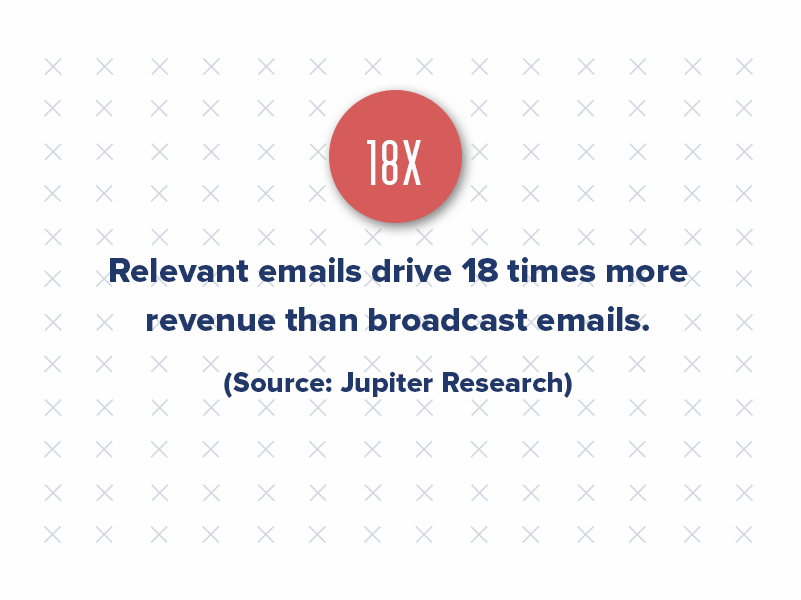
With email marketing, there’s no waiting for the postman or printing costs involved. A single click sends your message to hundreds or thousands of recipients instantaneously. However, the true magic lies not just in the speed of delivery but in how email marketing can be tailored and personalized for maximum engagement.
Let’s delve into the benefits:
- List Segmentation: One of the true strengths of email marketing is the ability to segment your list. You can categorize your audience based on demographics, previous interactions with your brand, or even their position in the buying journey. This means that instead of sending a generic message to everyone, you can tailor your communication to resonate deeply with specific segments of your audience, leading to increased conversions.
- Increased Conversions: When you offer value in exchange for an email address, you’re essentially filtering in an audience that’s already shown interest in what you have to offer. Such opt-in lists increase engagement rates because the audience is already partially invested.
- Tracking and Analytics: Unlike direct mailers, email marketing platforms offer detailed insights into your campaigns’ performance. You can see who opened your email, which links they clicked on, and even how much time they spent reading.
- Environmental Friendliness: Without needing paper, ink, or transportation, it’s a method that’s kinder to our planet.
2. Pay-Per-Click Advertising (PPC Ads)
Optimizing your multifamily website to rank on the first page of search engine results is a long-term strategy that can pay off in the future. On average, 49,500 people search the keyword “property management companies” each month. Your target demographic will likely miss you if you are not located on the first page of search results.
Organically getting your website to rank high in search engine results can take time. That is why it can be beneficial also to pay to advertise in the search results. There are a lot of paid search advertising strategies that an agency can recommend and help you implement. For instance, you can pay for your PMC to show up when someone searches for your competitors.
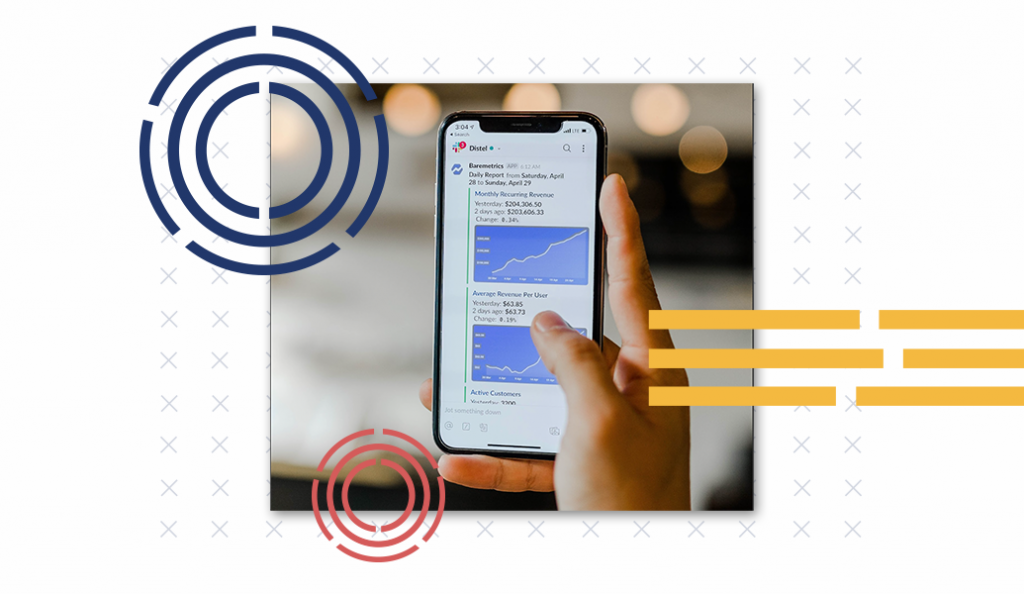
3. Display Advertising
Display advertising — particularly in a campaign where you specifically target users who left your website before contacting you — is also a worthwhile campaign to test. At its core, display advertising is about presenting visually appealing banners, images, or videos across a range of websites your target audience frequents.
One of the most effective strategies within display advertising is “retargeting” or “remarketing.” Have you ever wondered how that specific property you were eyeing suddenly popped up on various other websites you visit? That’s retargeting in action. It specifically targets users who visited your property management site but left without contacting you, making a booking, or completing another desired action. By reminding them of their previous interest, you significantly increase their chances of returning to your site and converting into a potential lead.
Here’s why investing time and resources into display advertising can fortify your property management marketing plan:
- Visual Impact: Unlike text-based ads, display ads capture attention instantaneously. With the right design and branding elements, they can make your property memorable.
- Tailored Targeting: Through sophisticated algorithms and user data, display ads can be tailored to specific demographics, ensuring that your properties are showcased to those most likely to be interested.
- Brand Awareness: Even if a user doesn’t immediately click on your ad, the consistent presence of your properties on multiple platforms reinforces brand recognition. Over time, this can lead to increased trust and a higher likelihood of them choosing your services when they’re ready.
- Measurable Results: Much like other digital strategies, display advertising offers insights into your ads’ performance. You can track metrics like impressions, clicks, and conversions, adjusting your approach accordingly for better results.
4. Social Media Advertising
Search engines are not the only place you can pay to advertise. In fact, social media sites like Facebook and LinkedIn offer even cheaper advertising options that can potentially deliver sizeable returns on ad spend. Boosting content through social media advertising can increase your reach, impressions, and engagement.
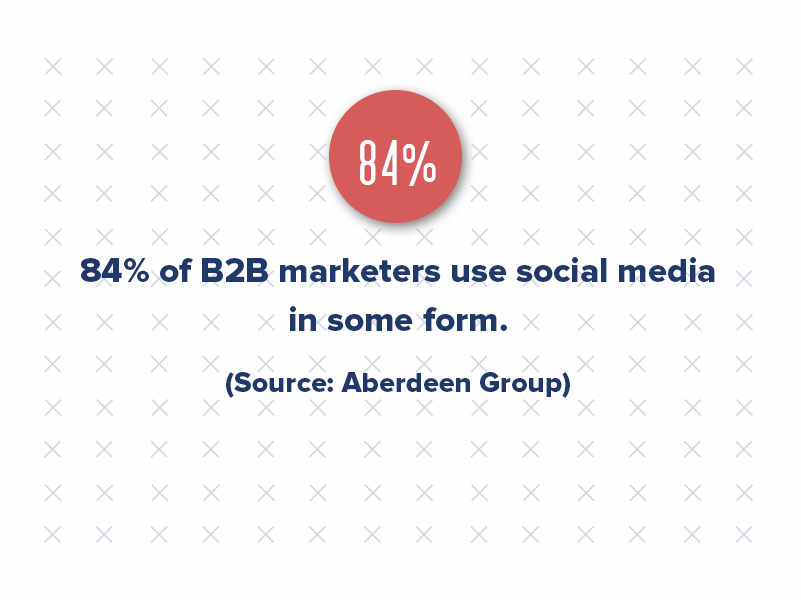
The Role of a Branding and Digital Marketing Agency
While it’s possible to devise an inbound marketing strategy in-house, partnering with a branding and digital marketing agency can elevate your efforts. Such agencies bring expertise in content creation, SEO, social media strategy, and more, ensuring your property management marketing plan is comprehensive and effective.
While outbound marketing still has its place, the future seems to tilt in favor of inbound strategies, especially in the realm of property management. The ability to effectively target potential clients, engage with them meaningfully, and adapt to digital trends makes inbound marketing for property management a winning approach. As the landscape continues to evolve, companies embracing this shift and investing in a well-structured property management marketing plan will likely stay ahead of the curve.

DALLAS, TX October 3, 2023 — Criterion.B, a leading digital marketing and multifamily branding agency is proud to announce the release of its state-of-the-art online ordering platform, AMP Studio. This innovative solution redefines how properties manage their marketing resources, providing instant access to property-specific marketing materials, move-in gifts, promotional items, and uniforms.
AMP Studio’s centralized platform eliminates the frequent challenges properties face, such as scattered requests and endless email chains. Instead, it offers a seamless, efficient way to boost a property’s marketing efforts, ensuring high-quality marketing items are delivered right to one’s doorstep.
Key Features of AMP Studio include:
- Streamlined ordering processes.
- Immediate access to pre-approved marketing materials.
- An expansive range of promotional items.
- A curated selection of move-in gifts.
- Standardized items tailored to meet property-specific needs.
“Property managers need solutions that can keep up in today’s fast-paced digital world,” said Criterion.B CEO Jon Simpson. “With AMP Studio, we’re delivering efficiency, standardization, and quality at their fingertips. It’s more than just a platform; it’s a revolution in how properties approach their marketing.”
Additionally, AMP Studio is designed to save valuable time for property managers, corporate marketing teams, and HR departments. Its unique system ensures all items have been carefully vetted to meet brand guidelines and quality standards, guaranteeing consistent branding across properties. Furthermore, properties benefit from real-time reporting and analytics, enhancing their decision-making processes.
Criterion.B invites properties to explore AMP Studio and discover its unparalleled benefits for themselves, from a streamlined process and brand consistency to pre-negotiated pricing and more.
Please visit the AMP Studio website for further information or to book a demo.
About Criterion.B
Criterion.B is a multifamily branding agency focused on branding and inbound marketing for the commercial real estate industry. We provide ROI, drive business growth, and build brand identities for our clients.
For more information, visit Criterion.B’s website.
Criterion.B Office Hours: Monday – Friday 8:00 am-5:00 pm
Maximizing Engagement and NOI With Instagram Marketing
Today, Instagram stands out as a game-changer, especially for multifamily digital marketing. With a user base majorly consisting of millennials and Gen Z, Instagram provides a dynamic platform that caters to the visual appetite of its audience, making it a prime tool in marketing.
Understanding Instagram’s Potential
At its core, Instagram is designed for sharing visuals — photos and videos. But it’s not just about simple picture-sharing; it’s about storytelling. With a plethora of editing tools and filters, you can elevate the aesthetic appeal of your photos, making them more engaging and resonating.
Whether you’re an individual or a property management company, the interactive features like commenting, favoriting, and tagging make the platform more dynamic. Its mobile-centric, scroll-friendly interface is what makes Instagram incredibly interactive and user-friendly.
Multifamily Properties & Instagram: A Perfect Match
Instagram isn’t just for influencers and brands; it’s a boon for multifamily properties and vendors. Here’s how you can leverage it:
- Show, Don’t Just Tell: Instagram’s visual-centric nature makes it perfect for multifamily properties to offer a sneak peek into their world. Be it a newly opened pool, the prep for a resident event, or delicious cupcakes in the lobby — let the residents see it. Highlight under-utilized amenities to generate interest. Remember, it’s not just showcasing facilities but emphasizing your property’s lifestyle and community vibe.
- Define Your Brand Personality: Before diving into Instagram marketing, it’s vital to identify your property’s tone and personality. Understand your target audience and tailor your content accordingly.
- Engage Your Residents Actively: With a substantial chunk of millennials active on Instagram, multifamily marketers can tap into the platform’s potential to boost resident engagement. Contests are a fantastic way to do this.
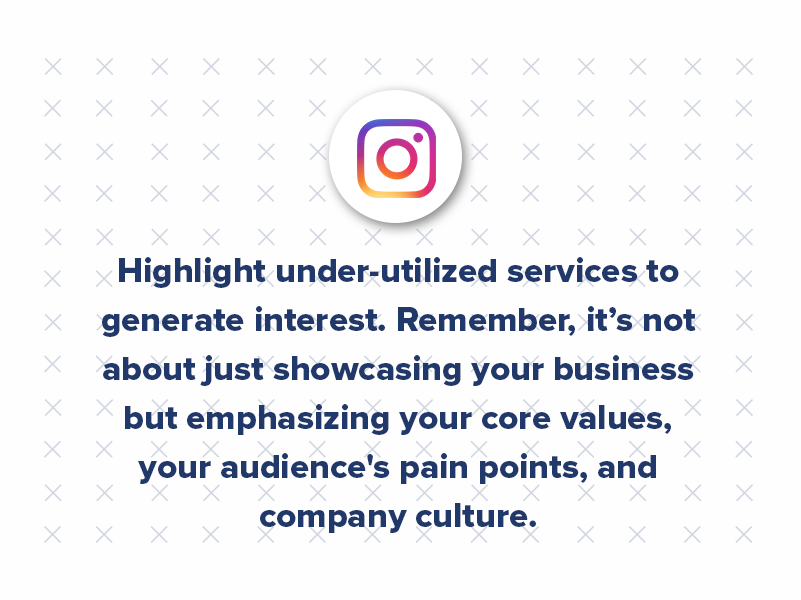
Leveraging Instagram in Multifamily Real Estate Investing
Instagram isn’t just a platform for residents and property managers; it’s a goldmine for multifamily real estate investing companies looking to position themselves as thought leaders and drive conversions. With its visually rich interface, Instagram can be an instrumental tool for showcasing industry insights, property highlights, and building trust among potential investors. Here’s how:
- Educational Content: Share bite-sized facts, stats, or trends related to multifamily real estate investing. Infographics and short video clips can effectively break down complex topics for your followers. These posts position your company as an industry expert and provide value to your followers, helping to build trust.
- Behind-the-Scenes: Showcase the inner workings of your company. Whether it’s a day in the life of your team, a property walkthrough, or the process of selecting a new investment property, giving a glimpse behind the curtain humanizes your brand and allows potential investors to feel more connected.
- Success Stories: Feature testimonials from satisfied investors or highlight successful property turnovers. Real-life success stories can resonate with potential investors, showcasing your company’s expertise and results in tangible ways.
- Engaging Polls and Q&A Sessions: Use Instagram’s poll feature or Q&A stickers in Stories to engage with your followers. This not only fosters interaction but can also provide insights into what your audience wants to know. Regular Q&A sessions can position your brand as transparent and responsive.
- Highlight Reels: Use Instagram’s highlight feature to categorize and save valuable content like property tours, investor testimonials, and educational snippets. This way, new followers or potential investors can quickly access and get to know your brand without scrolling endlessly.
- CTAs in Posts: Each post should serve a purpose. Whether you’re sharing an industry insight or showcasing a property, always include a call to action. It could be directing them to a recent blog post, inviting them to an investment webinar, or encouraging them to DM (Direct Message) for personal consultation.
- Leverage IGTV for In-Depth Content: Longer, in-depth discussions about multifamily real estate investing trends, strategies, or property evaluations can be shared on IGTV. This can benefit potential investors keen on understanding the nitty-gritty of the industry.
- Collaborate With Industry Experts: Collaborate with industry experts or influencers for joint live sessions or post-takeovers. This can expand your reach to their follower base and further cement your position as a thought leader.
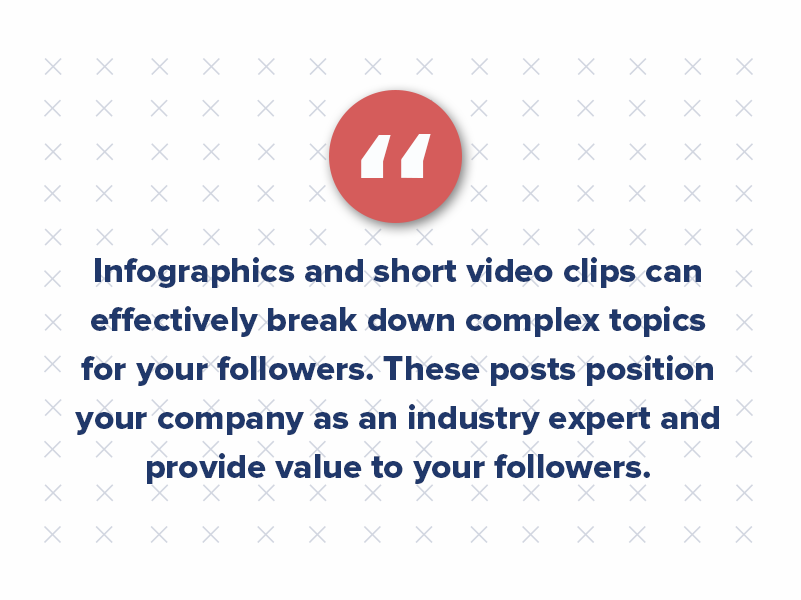
Unlock Instagram’s Potential With Criterion.B
Instagram is a potent tool, not just for visibility but for building meaningful connections. It’s much more than a photo-sharing platform; it’s a multifamily digital marketing powerhouse waiting to be tapped.
As multifamily marketers, the goal is to think visually and strategically to engage current residents and attract potential ones. Need assistance with your Instagram marketing strategy? Criterion.B is here to help you navigate and maximize this dynamic platform.
Beyond Likes and Shares: 5 Facebook Strategies for Modern Student Housing
Generation Z has become synonymous with online interactivity. Having grown up during the rapid expansion of the internet and with smartphones always within reach, they are a generation that prioritizes digital communication over traditional methods. For Gen Z renters, expressing themselves through text or sharing weekend escapades on social media is the norm.
Struggling to connect with them? It’s a two-way street. Just as you might find their digital-first approach bewildering, they might be equally puzzled by older communication methods.
Dive Deep Into the Digital World of Gen Z Renters
If you’re in the realm of student housing development and wondering why social media should be your go-to communication tool, consider this: the window to engage with these students is relatively short. Missing out on the platforms they frequent means missing out on key interaction opportunities.
Let’s talk about Facebook to start. About 70% of American adults use Facebook. And you might be thinking, are any of those users even Gen Z renters? Recent studies show only about 7% of Gen Z users plan to quit Facebook in 2023. While this isn’t the “first choice” social media platform for this demographic, they still use it.
So, what’s the best way to tap into the heart of Gen Z’s digital life, especially on platforms like Facebook?
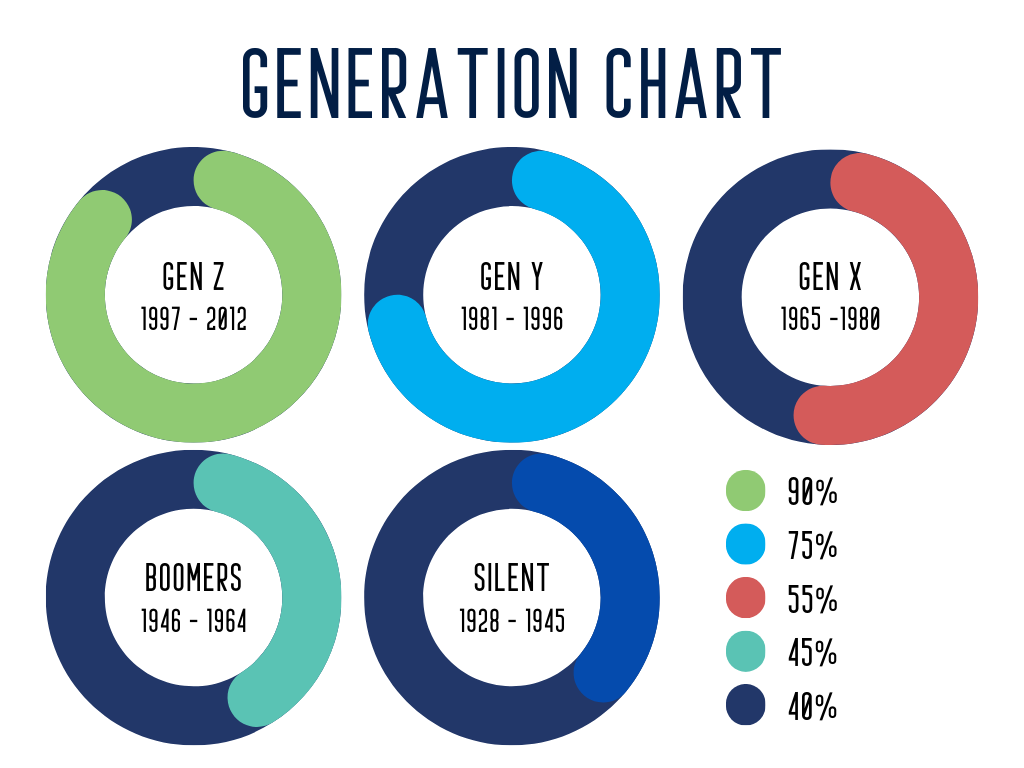
1. Promote On-Campus Events Digitally
If you’ve observed dwindling numbers at on-campus events, it might be time to rethink your promotional strategy. Traditional flyers might not just be environmentally unfriendly but might also not resonate with Gen Z renters.
Instead, create Facebook event pages to promote these events. Showcase visuals from previous iterations (if it’s an annual event) to blend tradition with contemporary outreach methods.
2. Quick Weather Updates
Imagine a scenario where unforeseen weather conditions, like heavy snowfall, disrupt regular schedules, and classes must be canceled. Instead of relying on email notifications that might go unread, why not use Facebook?
With Gen Z constantly scrolling through their newsfeeds, timely posts about weather alerts ensure immediate dissemination of crucial information.
3. Disseminate General Announcements
Got updates about the residential facilities, changes in semester timelines, or items in the lost and found? Facebook is your platform! Craft concise posts enriched with visuals (images or videos) to swiftly inform your student housing community.
4. Foster a Community With User-Generated Content
User-generated content is one of the most genuine ways to boost engagement and build a sense of community. Encourage your residents to share their unique experiences, be it a quiet study session in the lounge, a fun community event, or even a serene sunset view from their apartment window.
Launch monthly challenges or themes where students can share photos or stories about a particular topic or hashtag. Not only does this provide fresh, authentic content for your Facebook page, but it also allows residents to actively participate in creating the narrative of their community. Celebrate and showcase this content by sharing selected posts or creating monthly highlights. This validates your residents’ efforts and paints a genuine picture of life in your housing facility, which can be an invaluable tool for prospective students evaluating their housing options.
5. Utilize Facebook Groups for Direct Engagement
Did you know that 1.8 billion people interact in Facebook groups every month?
Beyond your primary Facebook page, consider setting up dedicated groups for different blocks, year groups, or special interest communities within your housing complex. Facebook Groups offer a more intimate setting for discussions, feedback, and announcements specific to group members.
For instance, a group dedicated to residents interested in fitness could have announcements about gym timings, fitness challenges, or even resident-led yoga sessions. Similarly, a group for a specific block or building can discuss maintenance issues, attend community meetings, or even organize block parties.
You can offer tailored content and create a more personalized resident experience by segmenting your audience. Additionally, these groups foster peer-to-peer interaction, helping residents connect over shared interests or concerns. It’s about broadcasting messages, facilitating conversations, and building a supportive community.
Social Media Isn’t Just a Tool
While the digital landscape and preferences of newer generations might seem complex, remember that platforms like Facebook were ironically first conceptualized for college students. Embracing such platforms for your multifamily marketing can bridge the communication gap, foster a vibrant community spirit, and attract new apartment leads. If done right, social media isn’t just a tool — it’s a transformative force.
14 Google Business Strategies for Effective Multifamily SEO
In the ever-evolving world of multifamily marketing, ensuring a strong digital presence isn’t just beneficial — it’s essential.
With the growing importance of search engine optimization (SEO) in multifamily properties, one cannot overlook the power of the Google Business Profile.
Here’s how to supercharge your multifamily SEO using this game-changing tool.
Understanding Google Business Profile’s Origin
Google Business Profile is the offspring of the erstwhile Google Places and Google+Local Pages, which were map-based and social platforms, respectively. By bringing these two together, Google offers a user-friendly platform packed with features, ensuring a multifaceted boost for multifamily SEO.
Google Business Profile By the Numbers
From analyzing engagement metrics to understanding their effects on local search positions, these numbers craft a narrative that can shape your digital approach.
- 84% of business-related searches are exploratory, with a mere 16% being specific searches.
- About one-third of local enterprises appear in over 1,000 exploratory searches monthly.
- 56% of user interactions with Google Business listings result in visits to the company’s website.
- 64% of customers turn to Google to obtain contact information for local enterprises.
- During weekdays, 94% of calls to these local businesses are initiated from Google.
- On average, a business gets noticed in more than 1,000 monthly searches through this platform.
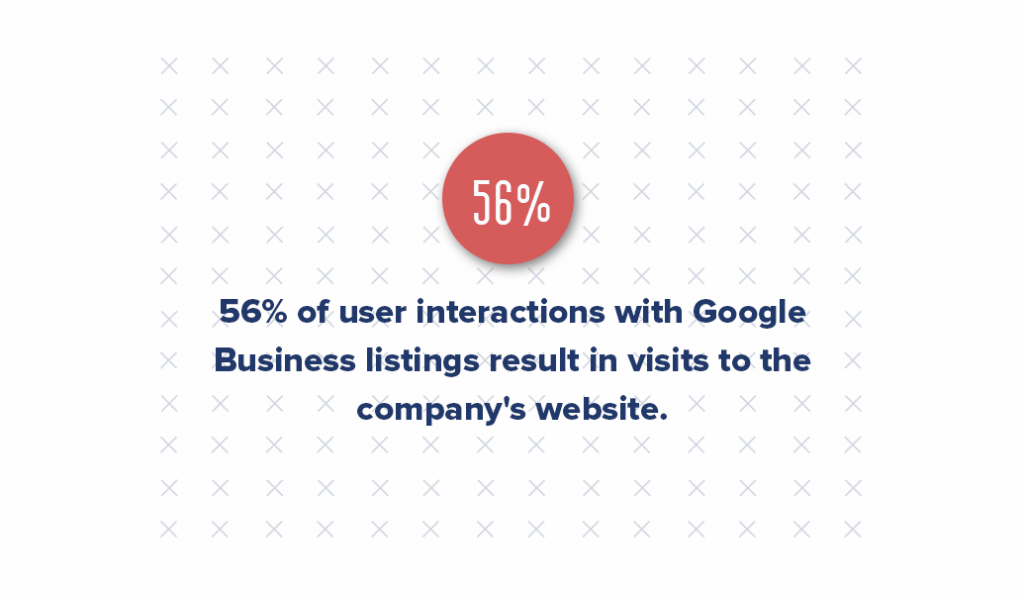
14 Must-Know Multifamily SEO Facts and Tips
- Spotlight on Maps: Having a Google Business Profile is like planting a flag on the digital map. It allows your property to shine on Google Maps, displaying key details such as the property name, contact details, and valuable user reviews.
- Consistent Updates are Key: Ensure that the information on your profile is up-to-date. An outdated phone number or address can turn potential renters away in frustration.
- Multiple Platforms, One Profile: Google Business Profile ensures your property’s visibility across various platforms — Google Search, Maps, and the former Google+. A digital trifecta, this increases your multifamily SEO strength.
- Transition Note: If you had a Google Places account, Google automatically moved you to a Google Business Profile. But remember to check and refresh your information periodically.
- The Social Edge with Google+: With the integration of Google+, your property can now organize virtual hangouts, curate content for specific circles, and share updates, enhancing multifamily SEO.
- Community Engagement: Use Google+ to share local events or news about your property. Google then indexes this content, making it discoverable in relevant search queries.
- Interactive Customer Care: Google+ also lets customers leave reviews and ask questions. Engaging with this feedback boosts your online reputation and displays a commitment to the community.
- First Impressions Matter: Ensure you have a captivating cover photo and a completed profile to capture interest at first glance.
- SEO Footprint Expansion: Every time your property appears on a Google page, your multifamily SEO footprint grows, enhancing your online visibility and attractiveness to potential renters.
- Staying Current: Regularly update your information. Fresh and accurate content is a cornerstone of successful multifamily marketing.
- Claim Your Space: Verifying your Google Business Profile is simple but crucial. Claim and verify your account to fully harness its multifamily SEO potential.
- Increased Engagement: Google+ features help you connect with individuals and businesses of similar interests, broadening your community and engagement.
- Maximizing SEO Impact: As you consistently update and engage on your Google Business Profile, Google rewards you with better search result placements, optimizing your multifamily SEO efforts.
- Forge Ahead in the Digital Landscape: Embracing the multifaceted features of Google Business Profile positions your property for success in the digital age.
The digital realm offers myriad opportunities, and with tools like Google Business Profile, multifamily properties can significantly enhance their online presence and multifamily SEO.
Ready to dive deeper and fully unlock the potential of your online strategy? Criterion.B’s expertise can guide the way. Connect with us, and let’s elevate your multifamily marketing game!
Top Strategies for Effective Multifamily Lead Nurturing
Multifamily marketing professionals face unique issues with lead nurturing through the marketing funnel.
For the multifamily market, issues arise in the form of heavy competition from neighboring apartments and issues with customer retention. For developers, problems arise with a lack of awareness limiting incoming leads. For vendors, issues arise with qualifying incoming leads to ensure they are legitimate and within the proper target audience.
While many methods help generate leads, the best way to ensure continued success is to nurture your leads. Through lead nurturing, continued strategic contact can help ensure that the leads you generate are properly qualified and remain interested in your offerings.
While lead nurturing is critical to the continued marketing success of any multifamily business, most companies fall woefully behind. According to HubSpot, 65% of B2B marketers have not established lead nurturing. This is a huge missed opportunity as organizations that excel at lead nurturing generate 50% more multifamily leads at 33% lower cost.
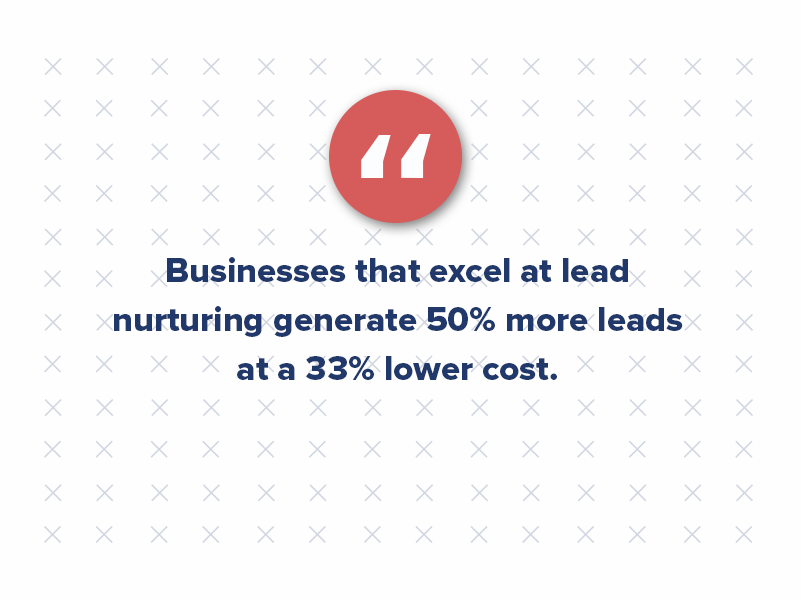
And Annuitus Group suggests that not only do companies who use automation to nurture their leads generate 451% more qualified leads but also that those leads are 47% more likely to make a larger purchase than their non-nurtured counterparts.
Knowing these numbers about lead nurturing, how many multifamily marketers miss it?
Valuing a Digital Multifamily Marketing Strategy
The commercial real estate industry is known for being behind the curve in adapting to the latest trends — especially technology. The same is true for marketing techniques.
Groups with no expertise in the industry have no idea how to use digital marketing to meet their marketing needs strategically. Partner this with a hesitancy to leave behind expensive “tried-and-true” outbound methods, and it becomes clear that commercial real estate marketers are unsure how to invest in digital multifamily marketing.
The key to robust digital marketing is to attribute value to that strategy. Many commercial real estate marketers fail to do so, hurting them in the long run.
The Advantages of Lead Nurturing
- Sustain Engagement: Keep your prospects engaged and maintain top-of-mind awareness for when they are ready to purchase.
- Guide Toward Sales: Nurture your contacts by seamlessly integrating sales messages within informative and valuable thought leadership content.
- Enhance Conversion Rates: Boost the likelihood of converting leads into sales by adopting a nurturing approach that adds value, ultimately maximizing the return on investment (ROI) for acquiring contact data.
- Prevent Lead Fatigue: Reduce the risk of overwhelming leads with aggressive sales pitches immediately after they download one of your resources. People generally prefer an educational and nurturing approach, which contributes to the success of building relationships and driving conversions.
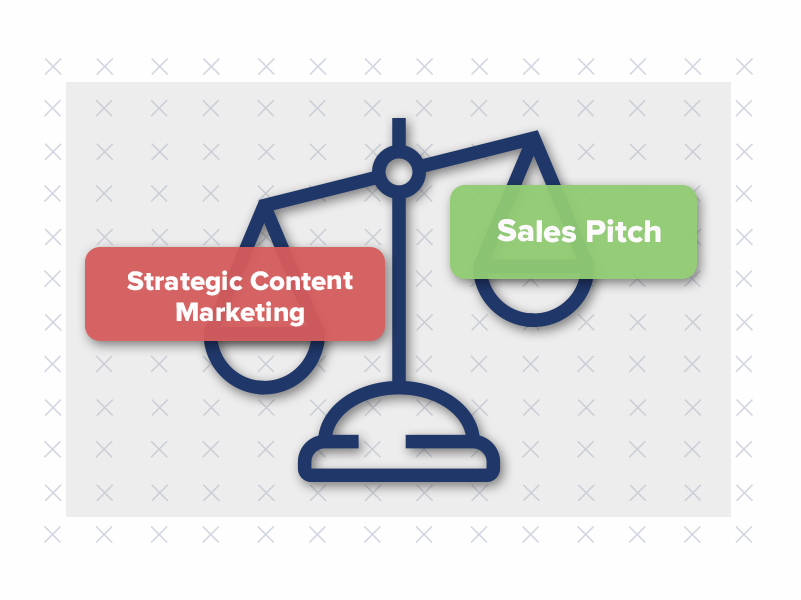
Finding a Balance
Digital marketing relies on the perfect balance of digital strategies, working together in an integrated manner to ensure consistent messaging and continued contact with an apartment lead or prospect. This means unique content — such as blogging, offers, social media content, email marketing, etc. — should all be tied around a central persona, strategy, and buyer’s journey.
Adding these aspects together and ensuring you have the team and resources to run it all adds up. However, compared to the average standard spend on outbound strategies, the cost is typically much less. In fact, inbound multifamily marketing costs 62% less than traditional marketing, yet each dollar spent on inbound marketing generates 3x as many apartment leads.
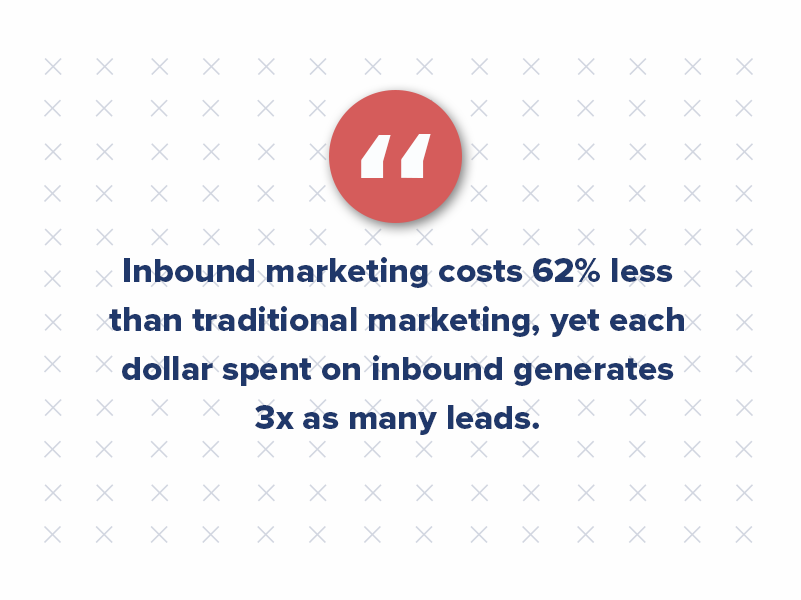
7 Types of Email Marketing Campaigns for Multifamily Lead Nurturing
Typically, when speaking of apartment lead nurturing, people instantly think of email drip campaigns. These are email campaigns automated to go out to a list over a specific period. While this can be a lead nurturing method, it is not the only method.
The fact of the matter is that many types of lead nurturing emails may be used depending on your needs. And each has a benefit or strength.
1. Welcome and Engagement Nurturing
When bringing new leads aboard, it’s wise to nurture them while they are still hot — actively interested. Capitalizing on the novelty of your introduction to them can be a great foot in the door to a positive impression. However, it’s also important not to scare away your multifamily leads by coming off as overeager. This is where a “welcome” campaign comes into place.
The benefit is two-fold: While engaging your lead with your brand, you can use this campaign to gather information to segment the lead further. Step one of a welcome campaign is always the same — you take the time to welcome your new multifamily lead and let them know what to expect. You can also offer a free resource.
Going an extra step, you can offer these leads a way to get customized information depending on their interests. This may take much work on your backend through list segmentation and automation software. But if the framework is there, it’s work that pays off. Offer a weekly newsletter on multifamily trends, interesting statistics, or relevant industry articles.
Engagement campaigns are similar and can often stem as an off-shoot of your welcome campaign. Want feedback on a certain aspect of your business? Engage a list focused on that aspect of a focus group or survey session, and motivate them to participate. In this form of nurturing, your imagination is the limit.
2. Qualification Campaigns
A qualification campaign allows you to hone in on a lead in a critical interest time. Let’s say a multifamily lead downloads a few offers in quick succession. Adding this lead to a qualification campaign lets you speak to them clearly as they try to discover the answer to their problem. Sending more related offers with opportunities to touch base with your team brings you closer to making the lead sales qualified.
3. Traditional Nurturing Campaigns
A traditional nurturing campaign takes your lead’s interest and continues to offer relevant educational material. These types of campaigns most often accompany your overall marketing strategy. This campaign includes keeping in touch with a multifamily lead, giving them small opportunities to convert.
4. Event Campaigns
Whether hosting an event online or in person, an event campaign can help pique interest and attendance. Even if you’re trying to boost attendance to your booth at an industry conference, event campaigns are a great way to spread awareness, boost interest (usually by a unique offer), offer reminders and other great tips leading to your event, and provide an excuse for strong feedback and thank you emails that can further promote conversion.
5. Promotional Campaigns
If you have some multifamily leads you feel are on the edge of closing, a promotional campaign might be a nudge in the right direction. A promotional campaign should be very controlled, not to cheapen the perceived value of your product. Discounts, free bonuses, or even referral bonuses are good ways to augment a promotional campaign.
6. Re-engagement Campaign
Do you have a lot of leads that have gone cold? Purging these leads from your lists can seem like a waste. Instead of letting these multifamily leads go, why not implement a re-engagement campaign? This includes reminding them of your value or offering them something special to engage.
7. Upsell Campaign
Don’t let the title concern you. While upsell campaigns have a negative connotation, they don’t always have to mean or reflect upselling. Rather, an upsell campaign promotes your offerings to existing customers. In some cases, this means offering additional services.
Return Is in the Eye of the Beholder
Knowing that multifamily lead nurturing is far more complex than most marketers realize, the question becomes, which form offers the best return? The answer is not so simple. While each of these nurture campaigns requires a certain amount of upfront investment, the payoff depends entirely on your business.
The question comes down to which problem you are facing the most. If your issue is moving leads down the pipeline, a qualification campaign will most benefit your needs. If you are working on reviving multifamily leads, engagement, and re-engagement campaigns should be your go-to.
Choosing a nurture campaign tied to your strategy is more important than taking a set-it-and-forget-it route. This is where you can make the most significant impact on your business. Only then will you see sustainable success in nurturing your multifamily leads.
What to Expect When Starting an Inbound Marketing Campaign
Today’s marketing has evolved from interruptive tactics to a customer-oriented approach called inbound marketing. This route empowers your customer to be equipped with all the information they may need to decide without feeling like they’re being “sold to” from the first interaction.
In commercial real estate, everything from a property management company to multifamily vendors serving the space needs a marketing tactic that relies on warm leads.
When evaluating whether an inbound marketing campaign is right for your multifamily business, there are a few things to understand first.
Time Is an Investment
The hardest thing for clients to wrap their heads around is the time it takes to get an inbound marketing campaign in full swing. While everyone is looking for instant gratification for their multifamily marketing ROI, we remind our clients that time is an investment. We set expectations early on that inbound marketing isn’t a quick fix, but rather a long-term solution.
Let’s say a multifamily property wants to create buzz during lease-up for three months. A full-funnel inbound approach may not be ideal for this short-term need. A social media marketing strategy may better fit this quick fix. However, if they want to maintain a marketing strategy that identifies prospective residents, targets content, and creates a steady lead nurturing system — inbound marketing may be the ticket.
Inbound marketing is built on steps that can’t be skipped or left out of your strategy. A ramp-up period for inbound may take the three months that the multifamily business above wanted for simply heavy promotional marketing.
Rather than short bursts of promotion, with inbound, you have to build a solid foundation first. If not, your entire inbound marketing campaign process will be working backward to fix the broken links.
However, when you give inbound the time it needs to get the working pieces in place, you start seeing your work pay off.
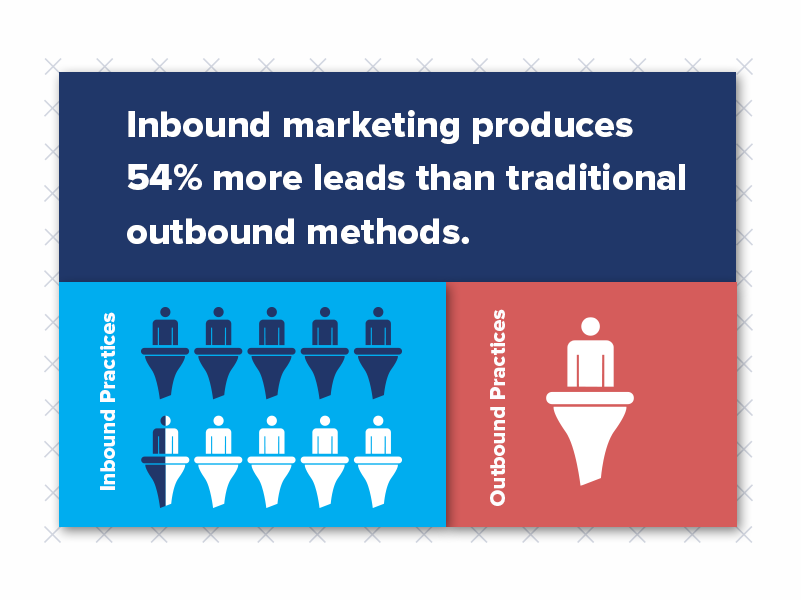
Consider the following stats from HubSpot, a leading marketing automation software company:
- 92% of companies using inbound marketing increased their traffic, and 40% increased their traffic by at least 75%.
- 85% of companies using inbound marketing increase traffic within 7 months
- Blogging champions as the #1 method for increasing traffic, with SEO in second place
- “Other” inbound marketing techniques (i.e., landing pages and calls-to-action) are ranked the #1 method for increasing leads
- 42.2% of companies using inbound marketing increase their lead-to-sale conversion rate
- 49.7% of companies using inbound marketing increase sales within 7 months
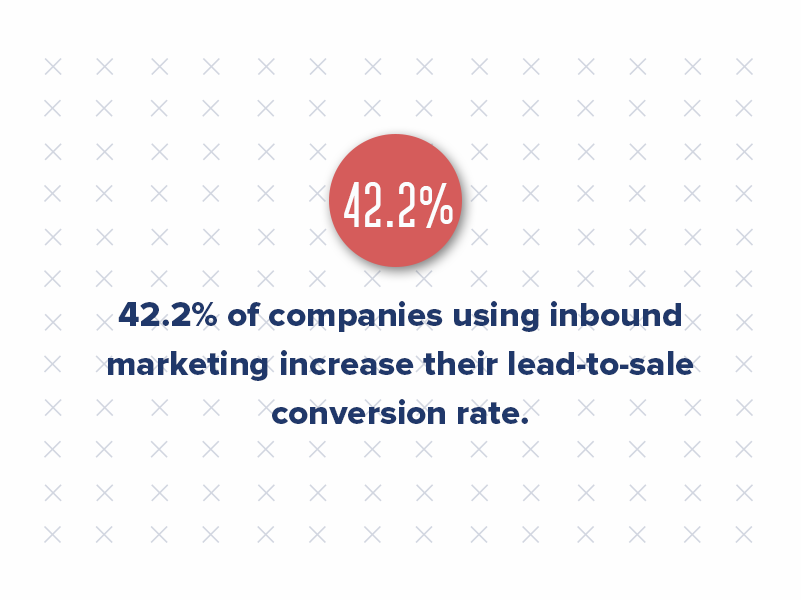
Results Come From Strategy
Like many things in life, you can expect to get out of an inbound marketing campaign what you put into it. When you’re looking to see the magic of inbound marketing in action, you can’t sit back and let it go on its own. It takes constant review, regular planning, and lead nurturing. This could be in the form of ready-to-rent leads showing interest in your property solely by viewing your content and social media.
By not taking shortcuts, you’ll be pleased with the results your campaign brings in. But what takes so much time?
Buyer Personas
The first step is always research. The cornerstone of any inbound marketing campaign is developing buyer personas. Buyer personas are semi-fictional characters representing your ideal resident or customer and going beyond just demographics. Your personas will help target all content and strategy surrounding the campaign. These can take a few months to develop, as it’s important to interview residents to get insight into your target audience.
Keyword Research
Much of the ramp-up period consists of research. Once you know your target, you need to know how you rank for industry-specific jargon your audience uses. For instance, if your business is a real estate investment company, maybe you rank high in search terms for “multifamily investing” or “real estate investment firm.” By using a keyword analysis tool like SEMRush, Ahrefs, or Moz, you can identify how you’re ranking for very specific keywords. You can then optimize the content you create to feature those keywords.
Multifamily Website Design
Before setting up a buyer’s journey for your target resident to navigate online, your website has to be optimized for user experience (UX). A poor website can halt the effectiveness of a well-planned inbound marketing campaign. For instance, if people can’t find the leasing page or have difficulty finding floorplans, they’ll likely lose interest. Do not make your audience hunt for what they are looking for.
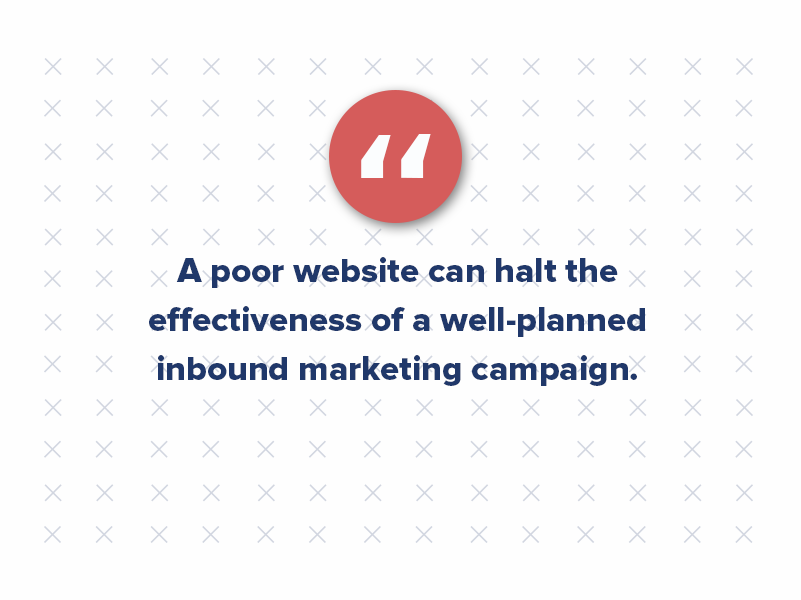
Content Mapping
You can plan the content once you’ve researched and optimized your website. You’ll want to create different content types for each stage in the buyer’s journey — awareness, consideration, and decision. Instead of publishing blogs on the fly or posting to social media randomly, plan out your content strategy. This will give your inbound marketing campaign direction, purpose, and organization.
HubSpot Set-Up
HubSpot is an amazingly effective tool for marketing automation. It helps build and automate workflows, email campaigns, social media scheduling, analytics, and more. Setting up your workflows, email templates, and building out social media accounts in HubSpot helps create a solid foundation.
Goals and Analytics
Without this step, there’s no way to assess the performance of the strategy you’ve put in place. Set SMART goals upfront — Specific, Measurable, Achievable, Relevant, and Time-based. Then, establish regular checkpoints to see how your strategy is doing. Tools like HubSpot, Google Analytics, and Klipfolio are great tools for measuring the success of your inbound marketing campaign.
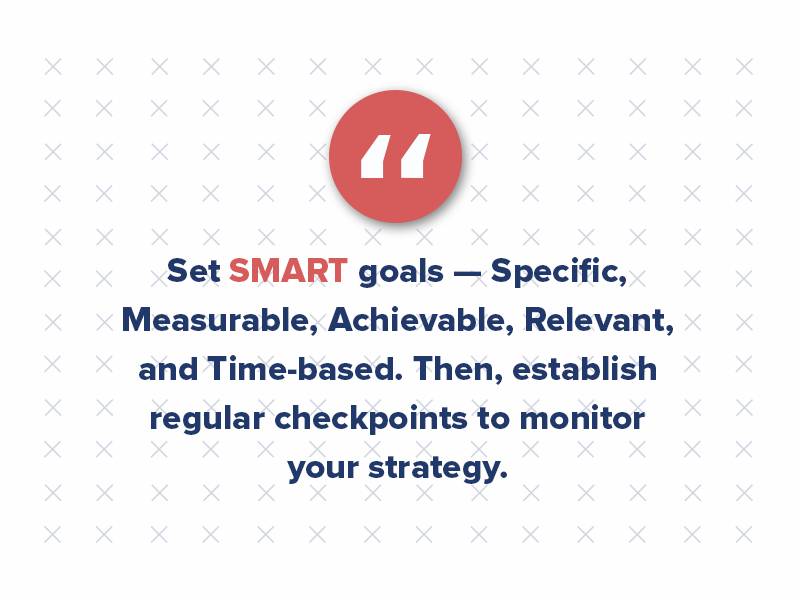
Now that you have the groundwork set, here comes the hard part — staying fully committed and on track with the goals you set. To be successful at inbound marketing, you must have faith. Those willing to let the process work through its entirety will see higher levels of success than those who change direction because they don’t see immediate results. Pausing your efforts or adding multiple layers to your pre-constructed plan will only lessen your impact. Be patient — we can’t stress this enough.
Become the Multifamily Marketing Expert
Inbound is a long, winding road of strategy, testing, retesting, and careful planning. While it may seem overwhelming at first, HubSpot supplies ample resources to teach new customers how to become inbound experts and more!
However, when it comes to being an expert and leader in inbound marketing for your industry, there are options. You can take it on yourself — which will likely be an overwhelming feat. You can hire an in-house inbound marketing expert, leaving the implementation and execution to them. If this isn’t your business’ specialty, you don’t have to go at it alone. You can also leave the heavy lifting to an inbound marketing agency.
As experts in inbound, an outsourced multifamily marketing agency (like Criterion.B) can put a business’ mind to ease by handling the entire process.
Taking Your Real Estate Leads From Multifamily Marketing to Sales
As inbound marketing begins to gain traction, more and more businesses are looking to adopt it into their strategy — either through a multifamily marketing agency or internally. Inbound promises to revolutionize multifamily marketing results for many of these businesses. But without deep research into the process, they find themselves frustrated at slow results or even lack of results.
For commercial real estate companies, in particular, doing inbound internally has quite the learning curve. With the business combining only certain inbound methods, they wonder why their methods are not working. And they may not even understand the need for a full inbound funnel.
However, when done properly, inbound marketing can be incredibly effective. Inbound can also be a great resource for an industry like real estate that’s stagnant in its marketing efforts.
The inbound funnel is undoubtedly the most important factor in inbound success. Every action in your marketing endeavors should point to a step in that funnel and how it relates to your buyer’s journey. But to understand how that funnel works, it’s essential to understand the role of lead qualification in the success of an inbound approach.
What Is Lead Qualification?
When working through an inbound funnel, the goal is to qualify leads. But what does it mean to qualify a lead?
Lead qualification involves gathering information about a prospect to determine where they fit in the buyer’s journey. This helps move a lead to a marketing qualified lead (MQL) and an MQL to a sales qualified lead (SQL).
The level a lead is at in the marketing funnel before reaching the customer is known as the lead’s lifecycle stage and are as follows:
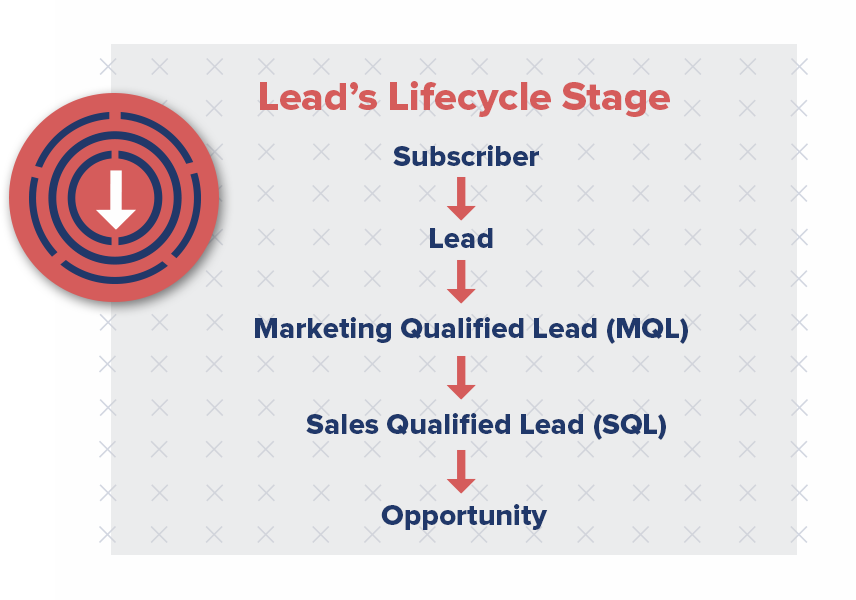
However, the definition of these lifecycle stages concerning your funnel varies depending on your business. For example, let’s say you worked at a property management company trying to attract residents to one of your properties. In that case, your lifecycle might be defined like this:
- Subscriber — A subscriber to your blog or newsletter but who has not engaged in downloading an offer or engaged for rental information.
- Lead — Someone who has downloaded a neighborhood guide or other entry-level information on your site but has not tried to engage about renting.
- Marketing Qualified Lead — Someone who has asked for information regarding rentals, be it availability or price range but has not engaged with a sale representative yet.
- Sales Qualified Lead — Someone who has asked for information on renting and fits/can afford the space; the person has also talked to a sales representative.
- Opportunity — Someone who has shown interest in renting and has engaged or seen the property.
For each company, the criteria may differ. If rents are a certain amount, or your complex is targeted toward seniors, a marketing qualified lead or SQL might need to match certain criteria before going forward. The next issue becomes — how do you get that information?
The Steps in Qualifying Your Real Estate Leads
Information is the end-all-be-all of multifamily marketing success. But gathering information is an increasing challenge. Digital concerns about privacy and security make the availability of information online difficult. Since information is needed to qualify leads for your sales team, it creates a need to be inventive in gathering information from leads. The best way? By creating an exchange.
The exchange of information for something else is key to the foundation of inbound marketing. Inbound marketers create offers that relate to each stage of the buyer’s journey. For example, they can offer an infographic on the neighborhoods in your city and make the offer downloadable in exchange for contact information.
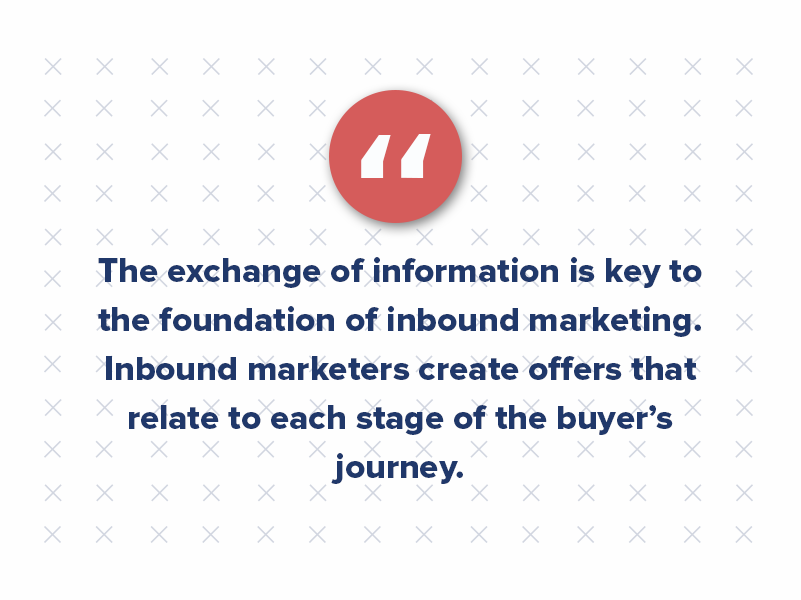
In this trade-off, consumers get valuable information, and their information is the price associated. The questions in the form of an offer, in turn, help the company qualify the lead. This helps expedite the sales cycle, rather than having sales pursue leads that are not ready to be contacted.
Again, determining the necessary information to qualify your real estate leads depends on your business, service, or product. If you’re a company offering residential services to multifamily residents, you may not want to ask revenue questions like you would when partnering with an apartment complex. Instead, you may want to know how often they need your service. It’s essential to ensure the information is relevant to the potential lead and that you’re asking the questions. For instance, not asking sales-focused questions when a lead is looking at an awareness offer.
This helps keep leads engaged while also gathering information for business needs. Knowing the answers to these questions not only qualifies your leads but gives you a better understanding of your potential customer.
Where Lead Qualification Goes Wrong
Now that you understand the importance of offers and forms, the next step is implementing this strategy. How do you accomplish this? It may seem like a straightforward process, but many intricacies are involved.
Asking for the Wrong Information
If you’re offering a prospect an awareness offer, then you’re not going to ask for detailed information about their background, job title, etc. That’s because the value of that information is held in higher regard to the prospect than the offer.
The lead’s lifecycle stage doesn’t match what you’re asking at the time. By the same token, you wouldn’t want to offer a demo of your resident management software to a property management company by only asking for name and email; otherwise, you might get a lot of parties not ready to buy or not within the scope of what your product supports. These issues can cause a loss of real estate leads or even an inaccurate funnel.
Failing to Follow-Up
Another issue companies face in lead qualification is failing to follow up on their real estate leads. Getting a lead that downloads your offer is great, but you can’t be sure of their intent without further engaging the lead. This can be anything from sending a series of nurture emails to following up with another offer or adding them to a curated newsletter. This nurturing lets you measure their continued engagement and gives you more opportunities to further qualify the lead with other content.
According to Invesp, 80% of new leads never convert into sales. With lead nurturing, however, companies can see up to 50% more sales-ready leads at a lower cost. Why? Because lead nurturing can be automated, it’s simple, and it helps to measure a lead’s readiness.
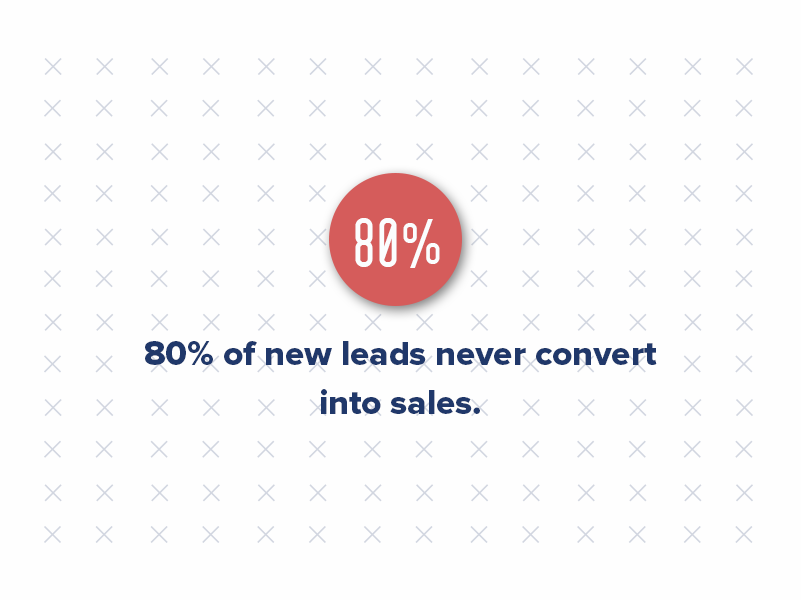
The most important thing about lead nurturing is to keep doing it. On average, it can take up to 8 marketing touches from a top-of-the-funnel lead to a closed-won customer. For many of your real estate leads, it may take even more. That means continuing with your nurture and follow-up with leads to ensure sales has a strong close.
Understanding Intent vs. Interest
Perhaps one of the biggest hangups in qualifying a lead is failing to understand a lead’s intent versus interest. A person in the neighborhood where you just built your swanky new apartment complex might have interest in your content because of location. But if they don’t fit the budget and aren’t looking to move, the intent is not there.
Marketers mistake interest for intent all the time, often leading to a marketing qualified lead being passed off as a SQL when that’s not the case. There are two options to help in this predicament, though — lead scoring and decision-based offers.
Marketing Automation Software
If you have access or interest, a marketing automation software like HubSpot offers lead scoring as a means to qualify your real estate leads. Lead scoring involves tracking any lead in your CRM across your site. With lead scoring, you can ascribe value to different blogs or page views, offers or email interactions. When a lead reaches a certain score, decided on by your team, they become sales qualified.
Decision Stage Offers
The secondary option is to use decision stage offers as a means of qualifying leads. This can be anything from making an appointment to see a space to offering a demo of a software. Creating a broader base of options for these offers can help you determine which leads are ready to buy. Leads who fail to engage with a decision offer when you have an array to choose from are likely not there yet.
Passing the Baton to Sales Qualification
So, your real estate leads are ready for sales — now what? Just because a lead is sales qualified, does not mean they are a good fit. Sales qualification is what makes a lead an opportunity and closes out the inbound funnel; it falls in the hands of the sales team to do this qualification. The reason? Just because a lead has interest and intent, doesn’t mean they meet the criteria of your product.
While lead qualification can help weed out those who don’t fit, it takes the sales team to assess fit, often using BANT (Budget, Authority, Needs, Timeline). What BANT does is ensure that the lead has the money, authority, and ability to use your product. Leads with poor BANT scores aren’t necessarily a waste of time, they may not be ready yet. But if that’s the case, it’s better for them to return to the cycle rather than have sales try to close a deal.
As a marketer, you’ll likely never know off the bat if a lead meets sales’ needs. That requires sales engaging with the lead first. Instead, it’s imperative to use lead qualification methods to ensure your real estate leads are qualified from a marketing perspective and ease sales’ jobs on the rest.






